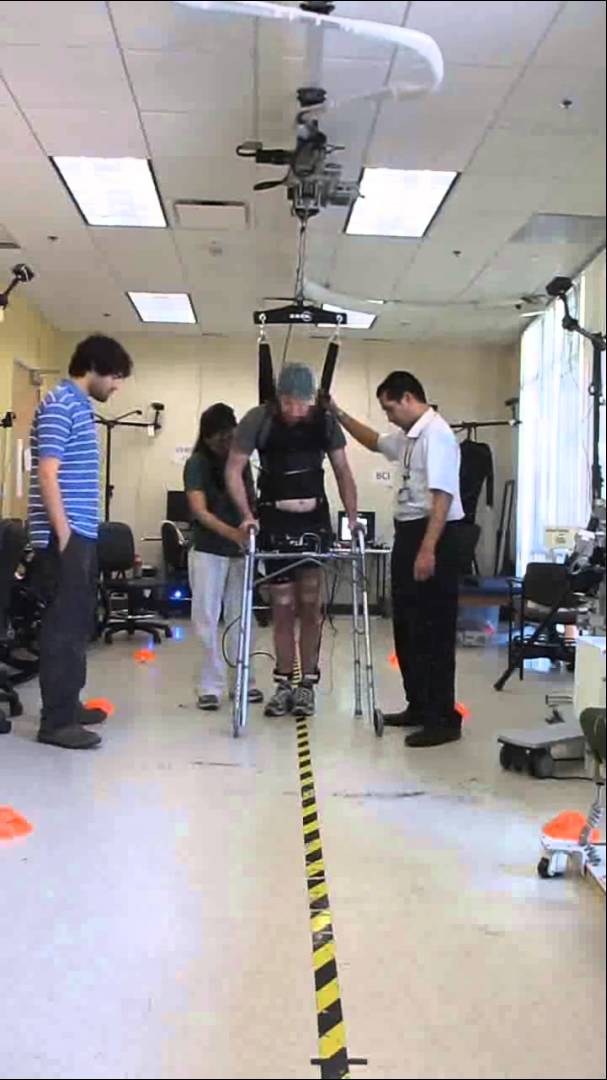Sep 28, 2015
New hydrogel can keep stem cells alive for heart repair
Posted by Shailesh Prasad in categories: biotech/medical, materials
A new hydrogel protects stem cells inside the body, making existing therapies a lot more effective.
A new hydrogel protects stem cells inside the body, making existing therapies a lot more effective.
Scientists believe they have found a better pair of molecular scissors to use with the genome-editing technique that is revolutionizing biology.
CRISPR-Cpf1 offers simpler approach to editing DNA; technology could disrupt scientific and commercial landscape.
Prevalence of Self-Reported Obesity Among U.S. Adults by State and Territory, BRFSS, 2014 (credit: Behavorial Risk Factor Surveillance System/CDC)
A molecule known as MnTBAP has rapidly reversed obesity in mice and could be effective for humans in the future, according to researchers from Skidmore College and the Perelman School of Medicine at the University of Pennsylvania.

A paraplegic man who was paralysed for five years has walked again on his own two feet, thanks to a new kind of brain-computer interface that can reroute his thoughts to his legs, bypassing his spinal cord entirely.
The anonymous man, who experiences complete paralysis in both legs due to a severe spinal cord injury (SCI), is the first such patient to demonstrate that brain-controlled overground walking after paraplegia due to SCI is feasible.
Continue reading “Watch: Paralysed man walks again via brain waves rerouted to his legs” »
The past few years have been marked by the proliferation of lab-grown organs, including limbs, livers, skin, heart tissue, and yep, even penises. But piecing together an organ, cell-by-cell, in a way that resembles the real thing is only half the challenge — you’ve actually got to make it work as part of several incredibly complex systems in a living, breathing organism. And that’s where most attempts fall flat.
But researchers in Japan have managed to grow fully functioning kidneys in the lab, and when transplanted into pigs and rats, they filtered out urine just like a natural kidney. Built using stem cells that had been extracted and then incubated in the animal recipients, the kidneys point to the possibility of lab-grown kidneys for humans in the future.
Led by Takashi Yokoo from the Jikei University School of Medicine in Tokyo, the team figured out how to overcome a challenge they’d faced previously with these lab-grown kidneys: they were good at processing urine, but instead of passing it into the natural ureter, they ballooned dangerously under the pressure.
Next January Stephen Hawking will be 74 years old. He has lived much longer than most individuals with his debilitating condition. In addition to being an unquestionably gifted cosmologist, he has invited controversy by supporting the pro-Palestinian, Israel-BDS boycott and warning about the dangers of alien invaders who tap into our interstellar greetings
Antisemitism, notwithstanding, this man is a mental giant. He is Leonardo. He is Einstein. Like them, his discoveries and theories will echo for generations beyond his life on earth. He is that genius.
Forty years ago, when Stephen Hawking still had mobility, he delivered a paper on a mystery regarding information-loss for entities that cross the event boundary of a black hole.
In the mid 1970s, Astronomers were just discovering black holes and tossing about various theories about the event horizon and its effect on the surrounding space-time. Many individuals still considered black holes to be theoretical. Hawking’s analysis of the information paradox seemed extremely esoteric. Yet, last month (Aug 2015) , at Sweeden’s KTH Royal Institute of Technology, Hawking presented a possible solution to the paradox that he sparked.
Continue reading “Stephen Hawking speaks with virtually no muscular movement” »
By Julie Steenhuysen.
(Reuters) — Scientists behind the discovery of a technology called CRISPR-Cas9 that allows researchers to edit virtually any gene they target are among the top contenders for Nobel prizes next month, according to an annual analysis by Thomson Reuters.
The predictions announced on Thursday come from the Intellectual Property & Science unit of Thomson Reuters (which also owns the Reuters news service). Since 2002, it has accurately identified 37 scientists who went on to become Nobel laureates, although not necessarily in the year in which they were named.
By Steve Gorman LOS ANGELES (Reuters) — A brain-to-computer technology that can translate thoughts into leg movements has enabled a man paralyzed from the waist down by a spinal cord injury to become the first such patient to walk without the use of robotics, doctors in Southern California reported on Wednesday. The slow, halting first steps of the 28-year-old paraplegic were documented in a preliminary study published in the British-based Journal of NeuroEngineering and Rehabilitation, along with a YouTube video. The feat was accomplished using a system allowing the brain to bypass the injured spinal cord and instead send messages through a computer algorithm to electrodes placed around the patient’s knees to trigger controlled leg muscle movements.